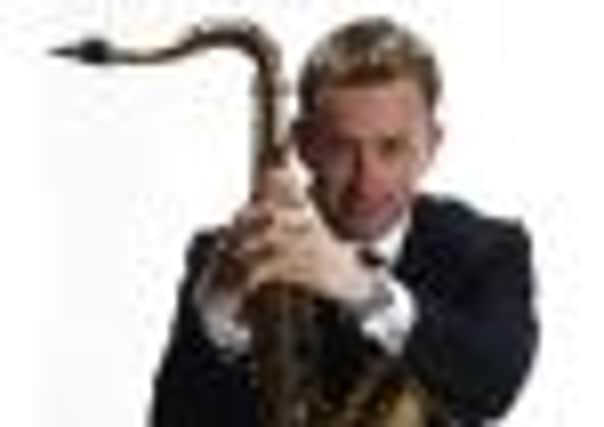Classical review: 16th World Saxophone Congress, St Andrews


On Friday alone, he would have encountered the creative fire of Tommy Smith’s tenor sax, blaring angrily or sailing over explosive accompaniment from the Scottish National Jazz Orchestra; or the twin sopranos of Australians Jabra Latham and Benjamin price, filling the ancient stone vault of St Andrews University’s Undercroft with mellifluous minimalism. Or what might Sax have made of the random, Zen-like meditation of John Cage’s Four5 , sounded out by eight players stationed throughout the darkened stillness of the Buchanan Theatre?
The SNJO’s Younger Hall concert was a highlight, its potently massed forces also framing three other fine sax soloists, Julian Arguelles, Frenchman Sylvain Rifflet and emerging Scottish star Ruaridh Pattison. In contrast, classical sax and organ Duo Bombarde rang out amid the Scots Gothic splendour of St Salvator’s Chapel, their cascading take on a Vivaldi violin concerto possessing a driving, Michael-Nymanish quality.
Advertisement
Hide AdAdvertisement
Hide AdAn even older venue was the Undercroft, where Latham and Price gave their persuasive performance of Australian composer Russell Gilmour’s Eleven Duos for Soprano Saxophones. They were preceded by the nine assorted saxes of the German ensemble Raum-Musik für Saxophone, who specialise in free-improvisation and interaction with such expansive spaces as cathedrals and swimming pools. Here, they found the low stone barrel vault something of an acoustic challenge, their tentative breathy flutterings coalescing into a wall of sound that seemed to thicken the very air.
The Buchanan Theatre presentation by John Sampen and Marilyn Shrude of Bowling Green State University, Ohio, with the help of their alumni saxophone ensemble, marked the centenary of the ever-challenging John Cage. Composer of numerous sax-specific works, the mischievous Cage would surely have relished the instrument’s infestation of the Fife town.
Ironically, however, the first strains of last Tuesday’s opening gala concert came not from a saxophone but from Fraser Fifield’s Border pipes as they opened Richard Ingham’s Traditions Old and New, the pipes’ plangent lament joined by fiddle and accordion then by a stirring heterophony of reed voicings from the Scottish Saxophone Ensemble.
The concert, in a packed Younger Hall, showcased the sax in contemporary orchestral settings, courtesy of the Scottish Chamber Orchestra under conductor Clark Rundell. There were glorious moments, as when Branford Marsalis’s tenor sax floated in over a dramatic orchestral introduction to Andy Scott’s Laissez les Bon Temps Rouler, and in some hauntingly beautiful exchanges with harpist Philippa Tunnell.
Frank Martin’s 1970 Trois Danses for Soprano Saxophone, Harp, String Quartet and Orchestra, saw Dutch saxophonist Arno Bornkamp’s querulous soprano sounding over a pulsing middle section. Matthew Orlovich’s concerto for soprano sax and orchestra had its dreamlike moments, Barry Cockcroft’s sax trilling, birdlike, against gently chiming percussion, while the evening closed on an elemental note, with John Harle’s authoritative soprano rising above the SCO’s earthy mutterings in Sally Beamish’s Imagined Sound of Sun on Stone.
Rating: ****